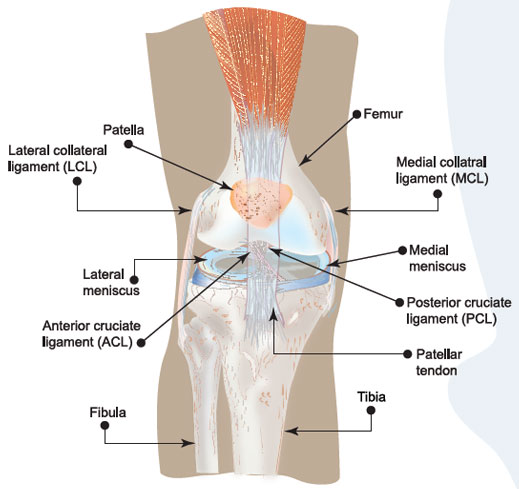
Arthroscopic knee surgery is used to treat a variety of common knee disorders, including meniscus cartilage tears, anterior cruciate ligament tears, articular cartilage wear, and patella problems.
|
How is Arthroscopy Performed?
Arthroscopy is typically performed in an outpatient surgery setting. The type of anesthesia used is up to the patient, surgeon, and anesthesiologist, but the procedures can often be done under local anesthesia. Two small incisions, each the size of a dime, are needed to insert the scope and any necessary instruments. The joint is filled with sterile fluid to improve visualization. Most procedures take less than one hour to perform. Partial weight bearing with crutches is recommended for the first few days after surgery, then walking as tolerated is allowed.Elevation, icing, and anti-inflammatory medications will help decrease pain and swelling. The knee should be kept dry when showering for the first 3 days by placing a bag over the leg. After this, simply change the band-aids after bathing. Patients usually begin light exercise in 1 week. Returning to full activities may take several weeks to several months depending on the procedure performed. Benefits of Arthroscopic Knee Surgery
Benefits of arthroscopic surgery compared with older open surgical techniques include:1. Minimal scars 2. No overnight hospital stay 3. Decreased pain and swelling 4. Improved motion 5. Quicker functional recovery 6. Fewer risks and complications Risks and Complications
Complications from arthroscopic surgery are extremely rare, and include bleeding, infection, blood clots, nerve or blood vessel injury, and the need for further surgery. The most common reason patients experience some persistent discomfort after arthroscopic surgery is from underlying damage to the articular or lining cartilage of the joint (early arthritis). Post-Knee SurgeryIt is important that you are prepared and know what to expect post-surgery. A few quick tips include preparing your ride after surgery since you will not be able to drive home. Have your home already prepared for where you will be sleeping or moving about so that frequently used items are easy to reach. Keep entertainment nearby as you will most likely not be able to do too much activity for a few days. Follow your physicians orders for any pain medication. Keep the rest of your body flexible. Begin physical therapy as soon as your doctor gives you the go ahead. Once you begin rehab, work hard, be diligent and follow-through for your road to recovery. |










